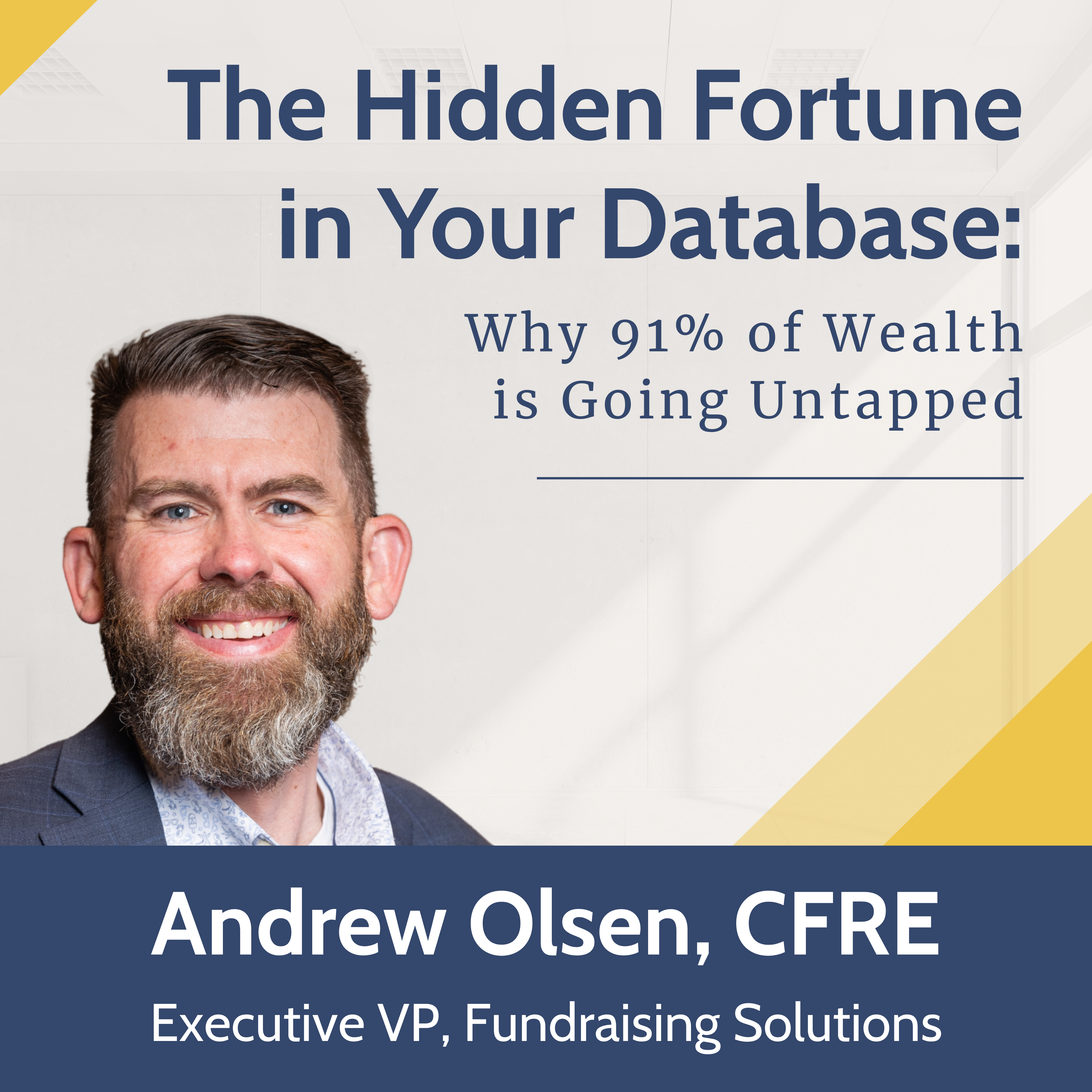Here's a statistic that should terrify every nonprofit leader: 91% of all wealth in the United States is held in assets other than cash. Yet the majority of America's 1.5 million charities are fighting over just 9% of available wealth—because most nonprofits only ask donors to write checks or give credit card contributions.
This insight, shared with me by Dr. Russell James at Texas Tech, fundamentally changed how I think about fundraising strategy. Many nonprofits sit wondering why we can barely make payroll each month while sitting on a goldmine of untapped generosity.
The Hidden Donors Already in Your Database
In a study of 40 donor files, we found that, on average, 18-23% of donors on each file held multiple millions in assets but were giving only $25-$150 gifts.
Why? Because that's what we unintentionally trained them to give, by consistently only asking for small amounts.
Conversely, we've seen donors jump from $80 as their highest gifts, to $100,000 contributions in just six weeks’ time through what we call "major gift activation campaigns." These aren't people we found by chasing Jeff Bezos, Oprah, or Bill Gates—they were already in the database, waiting for someone to recognize their capacity and present them with an opportunity worthy of their generosity.
The Changing Donor Landscape
The middle class—historically the backbone of most nonprofit donor files—has lost 49% of their wealth over the past 50 years according to Pew Charitable Trust. Meanwhile, the highest income households in the U.S. have seen massive wealth growth. This creates both a challenge and an opportunity.
Organizations that don't invest more heavily in high-net-worth relationships and asset-based giving strategies will face a rude awakening. But those willing to adapt will discover donors ready to give through donor advised funds, IRA qualified distributions, appreciated stock, and estate gifts.
The Generational Shift
Younger donors present a different challenge entirely. Millennials and Gen Z don't give to brands—they give to causes. They're not loyal to your organization because of your 100-year history; they want to put dollars where they'll have the highest leverage.
Even when giving smaller gifts, we find that younger donors behave like major donors. They expect access to leadership, transparency in operations, and detailed impact reporting. Organizations built to provide this level of engagement to a few hundred major donors now need that infrastructure for thousands of smaller donors as well.
The Asset-Based Solution
Smart organizations are shifting from cash-focused to asset-focused strategies. Instead of asking everyone for $25, $50, $100, they’re asking for donor advised fund gifts, stock transfers, and IRA distributions. They're screening existing donor files for wealth and capacity rather than hoping to stumble across rich people in the community.
The results are transformational. Donors who've given three-figure gifts for years suddenly contributing five or six figures when asked appropriately. That $30,000 DAF distribution in response to a direct mail piece? It's just the tip of the iceberg—confirmation that this person has significantly more capacity for transformational giving.
The Bottom Line
Your next major donor is probably already in your database. The question isn't whether your donors have capacity—it's whether you're brave enough to find out. Stop competing for 9% of available wealth and start asking your supporters to give generously from the 91% of their wealth that's waiting for the right invitation.
The donors are ready. Are you?
Our team builds and executes major gift activation campaigns every day for our partners and we can help you too. Email me at andrew@dickersonbakker.com, or call or text me at 612.201.1967 if you want to talk about activating more major gifts for your organization.


